“Japan Wine” is made 100% from grapes grown in Japan.
All great wine comes from a knife-edge, but Japanese winemakers have it sharper than most, in this extended archipelago of jagged mountains, winter snow and summer typhoons. Yet the Japanese have been cultivating vines for at least one thousand years, and have had a wine industry since the 1860s. Wine is made in 36 of Japan’s 47 prefectures.
For decades, Japanese wine was barely exported, and much was of basic quality, made using imported concentrate. But in 2004 regulations made it easier for boutique wineries to set up. More recently, a new law stipulated that only Japanese grapes can make Japanese wine. The quality, diversity, and export potential has soared.
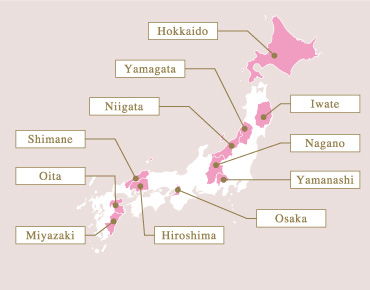
All aspects of wine culture in Japan developed under the Meji era, the visionary dynasty of the 1800s whose leaders led Japan to the world, and the world to Japan. It was they who sent agronomists to France to bring back the techniques of viticulture and winemaking.
The link with (and admiration for) France wine culture endures today: many of Japan’s most renowned enologists and viticulturists have trained and worked in France, and some of France’s most famous consultants have made wine in Japan. More recently, many Japanese winemakers have started to in top Universities in Australia.
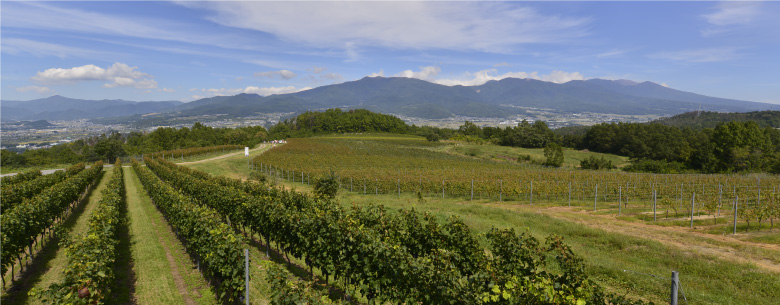
A surprisingly wide range of wine grape varieties is grown in Japan, including European classics in favoured spots and hardy hybrids that can cope with the winters. But two varieties are especially Japanese in origin, association and style, and have been recognised since 2013 by the hugely influential International Organisation of Vine and Wine (OIV).
OIV recognition brings a variety into the accepted standards of EU regulation, and permits it to be identified within the prized Geographical Indicators (GIs). It is a sign of acceptance, of typicity, and globally recognized quality potential.
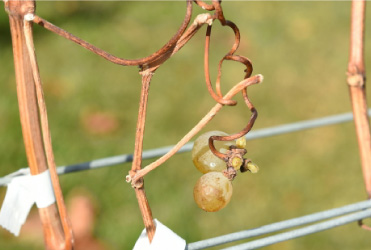
Koshu has an unknown origin and a much longer history. This vitis vinifera vine has been grown in Katsunuma, Yamanashi for at least 1000 years. It originated somewhere in the Caucasus, and was probably taken to Japan by traders on the ancient silk roads.
Koshu has fresh but rounded acidity, and several aromatic compounds in common with Sauvignon Blanc. The most familiar Koshu style is an ultra-delicate, subtle dry white with a sleek texture. More recently, exciting and more extrovert styles have emerged, including fine traditional (aka Champagne) method sparkling, and elegant ‘Orange’ wines, fermented on the skins.
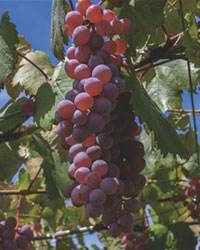
NOTE .1
One of the most important requirements was to improve the rather flat taste of Koshu wine, by extracting citrus flavours and applying the “Sur lie” practice. In the course of these efforts, a club of wineries in Katsunuma was founded to collaborate in their efforts to produce high quality, dry, white Koshu and in the development of Katsunuma region. Through these incessant efforts, a high quality dry, white Koshu is now made with a particular Japanese taste and there are even some noble notes detectable.
Of the two varieties recognized by the OIV, the youngest is Muscat Bailey A. This red-skinned grape was bred by the visionary and self-sacrificing aristocrat Kawakami Zenbei in 1927. If you don’t know Japanese wine, Muscat Bailey A is the unfamiliar and strangely named offspring of obscure parents.
But in under a century Muscat Bailey A has become one of most widely planted varieties in Japan. It buds late (so avoiding spring frosts), and ripens early. It crops reliably, and is disease resistant. For decades, it was relegated to the ‘easy drinking’ zone, and used principally to make high volume, fruity, light off-dry quaffing wine.
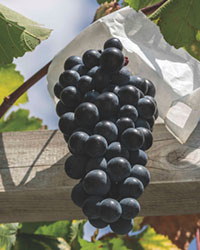
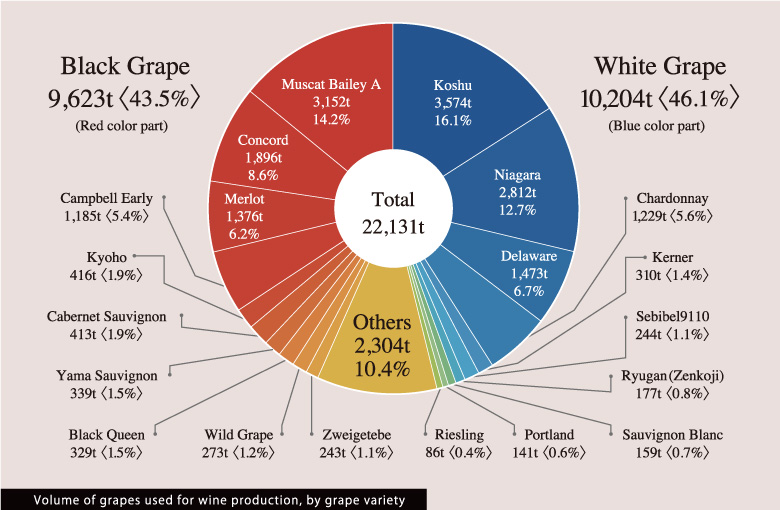
Source : National Tax Agency (2016)
The large number of European grape varieties grown in Japan surprises even wine specialists, so new is the awareness of Japanese wine culture. But European varieties have been planted across Japan since the modern wine industry emerged in the 1800s, and new examples continue to be adopted today.
NOTE .2
Japan Wine is produced largely from three grape varieties: Koshu (V. vinifera), Muscat Bailey A (a hybrid between V. vinifera and V. labrusca), and Delaware (a natural cross between V. labrusca and V. vinifera).
All of them are very tolerant to the wet climate and are resistant to a range of diseases. A large proportion of these grapes are grown by farmers rather than vignerons. The share of these traditional varieties is about 40% of total Japanese wine grape production, and when the Japanese wild grapes are included, it may go up to over 35%. In the past, this fraction was even higher than the present level. Vignerons have eagerly tried to introduce European varieties to improve the quality of wine.
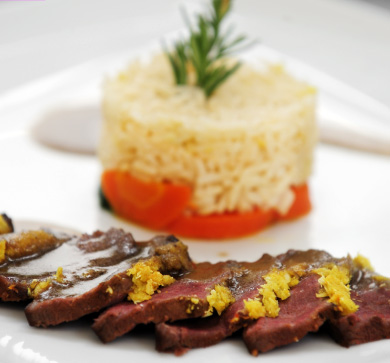

A small selection of Japanese wine has been offered for several years in the UK’s top Japanese restaurants. Recently, the new trend of “Anglo-Japanese” cooking has been called “London’s new favourite”, and there is huge interest in Japanese cuisine, produce and drinks.
Currently, the Japanese section of the drinks list at these buzzing bars and restaurants is dominated by spirits and sake. But there is huge potential to showcase Japanese wine in these influential and exciting venues.
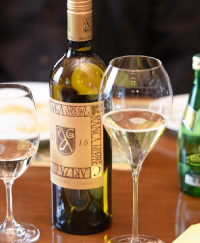
NOTE .3
It is astonishing that distinctly Japanese characteristics can be observed in wine, which was indeed made to display such characteristics with great care. The originality of character in good wine is particularly appealing to drinkers, and is really a unique charm of good wine. Moreover, this type of wine goes particularly well with Japanese cuisine, as it is said that Japan Wine brings out the subtle taste of Japanese cuisine.
Note by Teiji Takahashi, WINES OF JAPAN: A Comprehensive Guide to Wines and Wineries of Japan, 2017.
“Japan Wine” is made 100% from grapes grown in Japan.










